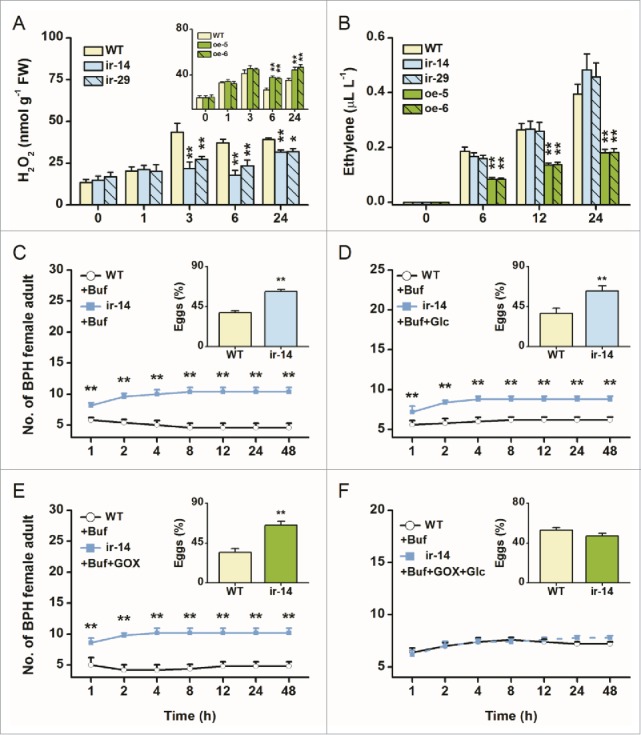Figure 2.

Exogenous application of H2O2 complements resistance to rice brown planthopper (BPH) in ir-wrky lines. (A) and (B) Mean levels (+SE, n = 5) of H2O2 (A) and ethylene (B) in ir-wrky and oe-WRKY lines and in wild-type (WT) plants that were individually infested by 15 female BPH adults. FW, fresh weight. Asterisks indicate significant differences in ir-wrky and oe-WRKY lines compared with WT plants (2-way analysis of variance , followed by pairwise comparisons of least squares means, P values were corrected by the false discovery rate method; *, P < 0.05, **, P < 0.01). (C) to (F) Mean number of adult female BPH per plant (+SE, n = 10) on pairs of plants, WT plants treated with 400 μL of 20 mM sodium phosphate buffer (pH 6.5) vs. ir-14 plants treated with 400 μL of the buffer (C), ir-14 plants treated with 400 μL of Glc (25 mM) in the buffer (D), ir-14 plants treated with 400 μL of GOX (50 units mL-1) in the buffer (E), and ir-14 plants treated with 400 μL of GOX (50 units mL−1) and Glc solution (25 mM) in the buffer (F), respectively, 1–48 h after the release of female adults. Inserts: mean percentage (+SE, n = 10) of BPH eggs per plant on pairs of plants as stated above, 48 h after the release of BPH. Buf, buffer; Glc, glucose; GOX, glucose oxidase. Asterisks indicate a significant preference within each combination and time point (Wald test, *P < 0.05; **P < 0.01).
